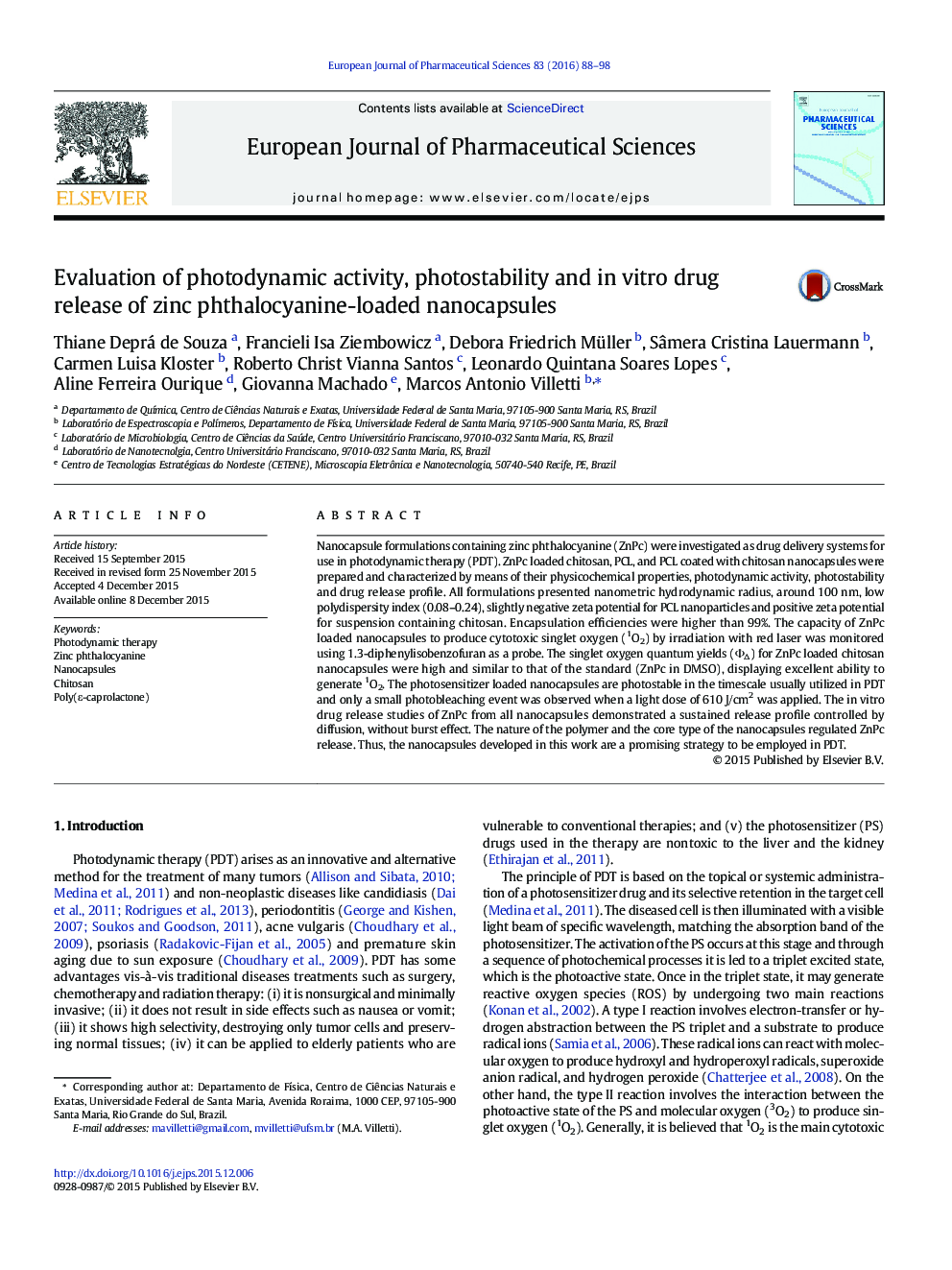| Article ID | Journal | Published Year | Pages | File Type |
|---|---|---|---|---|
| 2480152 | European Journal of Pharmaceutical Sciences | 2016 | 11 Pages |
Nanocapsule formulations containing zinc phthalocyanine (ZnPc) were investigated as drug delivery systems for use in photodynamic therapy (PDT). ZnPc loaded chitosan, PCL, and PCL coated with chitosan nanocapsules were prepared and characterized by means of their physicochemical properties, photodynamic activity, photostability and drug release profile. All formulations presented nanometric hydrodynamic radius, around 100 nm, low polydispersity index (0.08–0.24), slightly negative zeta potential for PCL nanoparticles and positive zeta potential for suspension containing chitosan. Encapsulation efficiencies were higher than 99%. The capacity of ZnPc loaded nanocapsules to produce cytotoxic singlet oxygen (1O2) by irradiation with red laser was monitored using 1.3-diphenylisobenzofuran as a probe. The singlet oxygen quantum yields (ΦΔ) for ZnPc loaded chitosan nanocapsules were high and similar to that of the standard (ZnPc in DMSO), displaying excellent ability to generate 1O2. The photosensitizer loaded nanocapsules are photostable in the timescale usually utilized in PDT and only a small photobleaching event was observed when a light dose of 610 J/cm2 was applied. The in vitro drug release studies of ZnPc from all nanocapsules demonstrated a sustained release profile controlled by diffusion, without burst effect. The nature of the polymer and the core type of the nanocapsules regulated ZnPc release. Thus, the nanocapsules developed in this work are a promising strategy to be employed in PDT.
Graphical abstractFigure optionsDownload full-size imageDownload high-quality image (101 K)Download as PowerPoint slide
